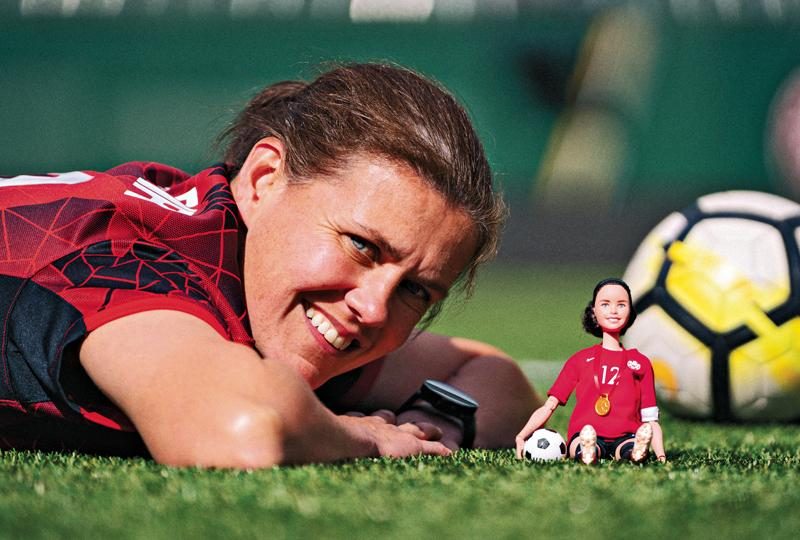
The Core Issue: When to consider a mommy makeover
By Malia Jacobson
Like most new moms, Olya*, 31, expected her body to change after pregnancy and childbirth. But the mom of two didn’t anticipate the drastic transformation that left her belly looking like a half-inflated balloon slanted to one side with a protruding belly button.
She felt cosmetically disfigured, she says, but that wasn’t the worst part. Every day, she fought through lower back pain, achy numbness in her legs, and debilitating fatigue. “By the end of the day, I couldn’t even stand up,” she says.
Worried that something might be seriously wrong, and unable to keep pace with her kids, Olya visited her OB-GYN. After a brief physical exam, her doctor suspected diastasis recti, or a vertical separation of her lower abdominal muscles, as well as an umbilical hernia near her bellybutton, resulting from damage to the abdominal wall sustained over two pregnancies. Unable to support her lower back and internal organs properly, her compromised core was causing her back pain, leg pain and weakness.
The bad news: All the sit-ups in the world wouldn’t help Olya regain her pre-pregnancy abs, because the strain of pregnancy had forced the muscles to separate beyond the point of self-healing.
The good news: There was a fix. Her doctor recommended a multi-step treatment that included an abdominoplasty, or tummy tuck, surgical reconstruction of her abdominal wall muscles to repair the diastasis recti, and hernia repair, a package of distinct surgical treatments known collectively as a “mommy makeover.”
Fixing the floor
Olya’s not alone, or even close to it. Problems related to the pelvic floor, a hammock-like layer of muscle and connective tissue supporting the uterus, vagina, and bladder, are experienced by a third to a half of women. Tears and openings in the abdominal wall are less common — about 200,000 women experience diastasis recti each year in the United States — but can wreak havoc on women’s physical appearance and quality of life.
Enter “mommy makeovers,” or surgical packages designed to help moms regain their pre-baby bodies after childbirth. They can include the surgeries recommended to Olya for abdominal repair, along with a breast augmentation, breast reduction, plastic surgery to reshape the belly button, and vaginal rejuvenation (vaginal tightening) surgery.
Another reparative option for moms: Surgery to correct prolapsed (collapsed) pelvic organs including the uterus, bladder, and vagina, which can cause pelvic pain, urinary incontinence, or pain during sex.
The American Society of Plastic Surgeons reports demand for tummy tucks increased 85 per cent between 2000 and 2010. According to “RealSelf”, an online community that offers information on cosmetic procedures, the number of women researching “mommy makeovers” on their site has jumped 32 per cent in the last year.
These fixes cost a pretty penny: Because procedures like breast augmentation and vaginal rejuvenation surgery are considered elective, they aren’t covered by insurance. (Medically necessary surgeries like hernia repair and surgeries to correct prolapse are covered.) Per RealSelf, “mommy makeovers” cost an average of around $12,000, but can set patients back as much as $50K.
Therapy without bandages
Surgery is pricey, and any surgical treatment carries some risks like bleeding, infection, and scarring. What’s more, these surgeries are recommended for moms who aren’t planning any more pregnancies.
Moms who may want more kids, or who’d like to avoid the knife but want to regain pre-pregnancy core strength, may have another option: Non-surgical pelvic floor physical therapy. Though physical therapy, also called PT, can’t repair abdominal muscle tears or hernias, a 2016 Dutch study showed that PT using basic strengthening exercises can effectively treat mild pelvic organ prolapse, helping stop the drip of urinary incontinence and reducing or eliminating pelvic pain.
Her therapist used vaginal biofeedback—an electrical readout showing tension in her pelvic floor—to help her learn to relax those muscles. “Now, I’m always mindful of tension in my pelvic floor,” she says, “and I know what to do when symptoms flare up.”
Moms can self-refer to PT or talk to their OB-GYN or midwife about a referral. Treatment is often covered by insurance and generally takes place over a course of 3-6 sessions a few weeks apart, with exercises assigned as “homework” between sessions. Workouts include pelvic floor contractions (Kegels) but don’t end there—depending on a patient’s physical condition and goals, a therapist may recommend lunges, squats, or small, controlled movements like squeezing a rubber ball between the knees. Sessions are usually no longer than a typical doctor’s appointment—and moms can usually take their tot to appointments.
Women should know that it’s never too late to seek out pelvic floor physical therapy, says physical therapist Peg Maas, board certified women’s health specialist with Seattle’s Swedish Medical Center. “There’s not a window of time for addressing these concerns, even if it’s been years since you gave birth.”
Malia Jacobson is a nationally published freelance writer specializing in heath and family topics. * Not her real name.





